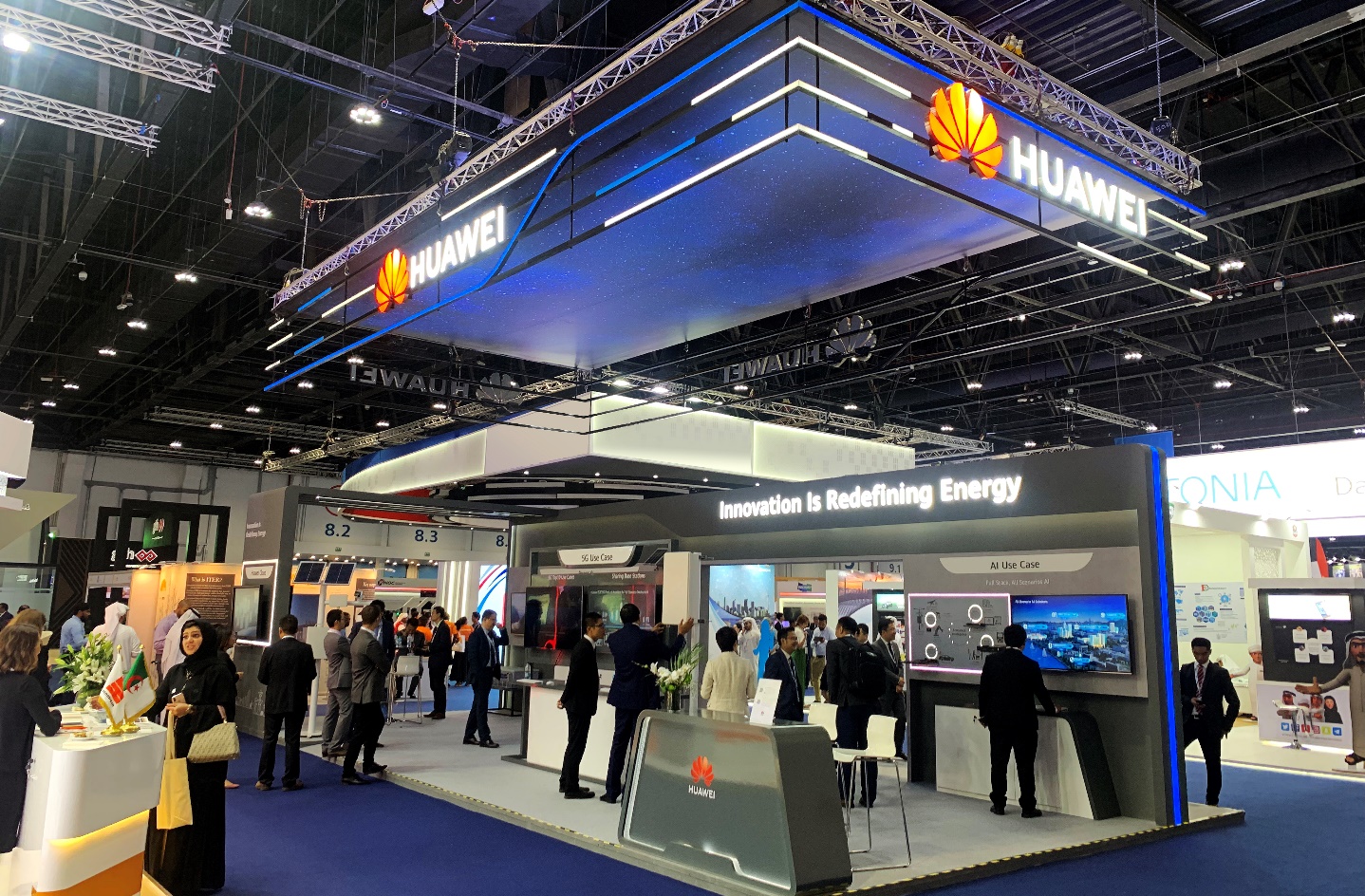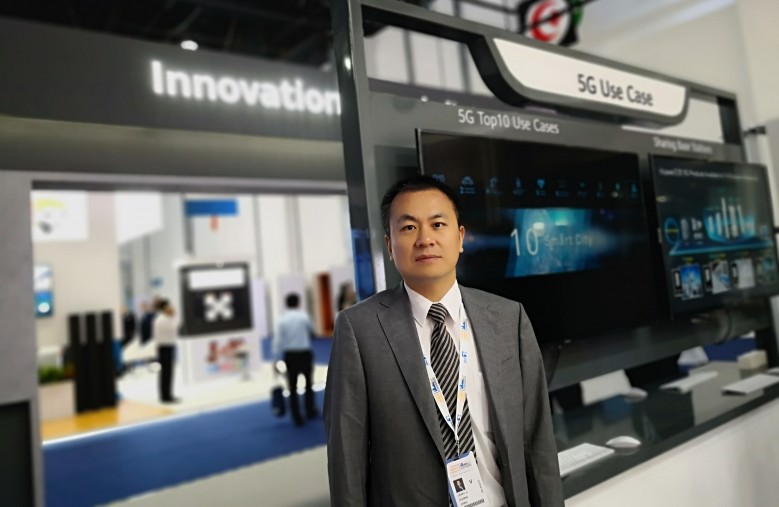Produits, solutions et services pour les entreprises
Akıllı Telefonlar, Bilgisayar&Tabletler, Giyilebilirler ve Daha Fazlası
[Abu Dhabi, September 9, 2019] Huawei has launched a series of 5G and AI-based innovative energy solutions at World Energy Congress 2019, under the theme 'Innovation Is Redefining Energy'. Huawei collaborated with over 70 energy ministers, 500 energy CEOs, and numerous partners, with these attendees coming from over 150 countries to expand the vision driving sustainable energy development by innovative ICT. Huawei also shared thoughtful insight into 5G, AI, cloud, and other innovative technologies, how it is reshaping the energy industry, and how it built the core of a digital world to accelerate the transformation of the energy industry from digitalization to intelligence.

Huawei Launches Solutions at World Energy Congress 2019 theming 'Innovation Is Redefining Energy'
Ji Xiang, General Manager of the Energy Business Dept, Enterprise BG at Huawei, said: “The development of human civilization is closely linked with energy evolution. A hundred years ago, the large-scale usage of electric power marked the beginning of the second industrial revolution. Communications technologies, such as 2G, 3G, and 4G, ushered in the third industrial revolution and connected people together. Now, 5G, AI, cloud, and many other innovation information and communications technologies (ICTs) are bringing in the fourth industrial revolution. 5G features the high speed, low latency, and large capacity, allowing ubiquitous connectivity. AI highlights the high computing power, low power consumption, and all-scenario application, enabling pervasive intelligence. Cloud supports virtualization, ultra-large scale, and high scalability, permitting extensive sharing. Together, they fuel digital transformation of all industries and build the foundation for the future digital world. Huawei is dedicated to cooperating with partners and customers to make intelligent energy a reality.“

Ji Xiang, General Manager of the Energy Business Dept, Enterprise BG at Huawei
5G Sharing Base Station Solution
5G base stations use high frequency bands and have small coverage, leading to high base station density. Therefore, 'limited space for multiple sites' has become a restriction that hinders fast deployment of 5G networks. Huawei provides a new solution for building 5G base stations on substations, which appropriately addresses this issue. The solution enables energy suppliers, tower providers, and carriers to benefit by sharing infrastructure resources. Energy suppliers provide physical bases for substations, which carriers can use to deploy 5G base stations. Carriers lease substation cabinets and power supply from energy providers to ensure uninterruptible power supply (UPS) for 5G base stations. Using Huawei's unique 5G antenna technology, tower providers are able to fully utilize and integrate their tower resources by mounting multiple types of antennas onto one mono-pole tower. In September 2019, China Unicom Nanjing successfully deployed such a base station. The construction period has been shortened from 30 days to only one day, significantly reducing the construction cost. In addition, a large amount of land, pipelines, transmission, and power is saved. Land acquisition is reduced by 840,000 square meters, which is equivalent to 117 football courts, and 420,000 tons of steel is saved. A total of US$1.3 billion is saved.
5G Mining Solution
Huawei and Yuexin Intelligent Machinery collaborated to develop applications with 5G technology. By using the Ultra-Reliable Low-Latency Communication (URLLC) feature of 5G networks, Huawei successfully applied 5G networks to the largest molybdenum mine in China and enabled autonomous driving of mining trucks and remote control of excavators. On-site excavators in another mine in Luoyang, China, can be remotely controlled from Huawei's exhibition hall in Shenzhen via the 5G network. The two locations are over 2,000 kilometers apart. Using the Enhanced Mobile Broadband (eMBB) feature of 5G networks, mining companies can conduct AI-based analytics for a large number of on-site videos captured by fixed and mobile cameras to facilitate precise and efficient mining. 5G technology will help reduce many manual operations in the mining industry and enable unmanned smart mining in the future.
Intelligent AI Power Line Inspection Solution
Huawei and Zhiyang Innovation jointly developed an intelligent power transmission solution. The solution integrates front-end reasoning, cloud-based training, and cloud-edge synergy. It uses Huawei's Ascend AI processors to build an intelligent power transmission monitoring system. Huawei Atlas 200 AI acceleration modules with embedded Ascend AI processors are integrated into pole and tower monitoring units. After installation, the units can perform intelligent analysis for the poles and towers. The modules work with the cloud to update detection algorithms in real time and automatically monitor and transmit potential hazards such as mechanical intrusion, foreign objects, and bird nests to the monitoring center with no manual assistance. In this way, the efficiency of power line inspection is improved more than five times that of the traditional method, and secure and stable power line operation is ensured.
Intelligent Distribution Transformer + Edge Computing
Huawei, China Electric Power Research Institute, State Grid Shandong Electric Power, State Grid Jiangsu Electric Power, NARI Group, and XJ Group jointly launched a new type of smart distribution transformer. The new smart distribution transformer adopts the 'software-defined terminal' design concept and uses an open edge computing architecture. Upgrade and additional features can be applied flexibly through apps, enhancing the configuration of resources and improving response to requirement changes by the power distribution network. The product implements innovative plug-and-play and interconnection between devices. It conducts local comprehensive analysis and intelligent decision-making on various types of collected data and effectively supports service requirements such as power failure analysis, power distribution device status management, electric vehicle charging control, and high-quality customer service. While being promoted and applied in China, the product developed to fully meet the comprehensive energy service requirements of electric power customers, is widely recognized, and is a warmly welcomed addition to the industry.
Global Electric Power Industry Ecosystem Layout
Huawei has more than 100 partners in electric power worldwide, and has joined multiple international standards organizations, including the International Electrotechnical Commission (IEC), International Telecommunication Union (ITU), Institute of Electrical and Electronics Engineers (IEEE), CIGRE, and China Electricity Council (CEC). Huawei has served as a member of more than 10 industry associations, organizations, and alliances, for example, the Chinese Society for Electrical Engineering (CSEE), Global Energy Interconnection Development and Cooperation Organization (GEIDCO), and China Smart Metering Infrastructure Alliance. Over 30 proposals have been submitted. Earlier in 2018, Huawei and IEEE IOT IC jointly published IEEE P1901.1, the Standard for Smart Grid Power Line Communication (SGPLC). In August, Huawei HiSilicon officially published IEEE 1901.1.1 Standard Test Procedures for IEEE 1901.1. The Standard is formulated in compliance with other IEEE standards. It promotes development and application of medium frequency (less than 12 MHz) power line communication in related fields, and provides guidance and a standard reference for the evolution of new technology. The IEEE 1901.1 Standard also plays an important role in guiding and standardizing the application of HPLC in the industry globally.